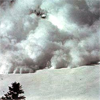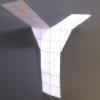Eclipses of the sun

Troublesome triangles
Many natural systems appear to be in equilibrium until suddenly a critical point is reached, setting up a mudslide or an avalanche or an earthquake. In this project, students will use a simple simulation game to investigate the properties of such systems.

First forward into Logo 3: repeat REPEAT
More Logo for beginners. Now learn more about the REPEAT command.
Plaiting and braiding
In order
First forward into Logo 1: square five
A Short introduction to using Logo. This is the first in a twelve part series.
First forward into Logo 2: polygons
This is the second in a twelve part introduction to Logo for beginners. In this part you learn to draw polygons.
First forward into Logo 4: circles
Learn how to draw circles using Logo. Wait a minute! Are they really circles? If not what are they?


Order the changes
The moving planets
First forward into Logo 11: sequences
This part introduces the use of Logo for number work. Learn how to use Logo to generate sequences of numbers.
Shaping the universe I - planet Earth
This article explores ths history of theories about the shape of our planet. It is the first in a series of articles looking at the significance of geometric shapes in the history of astronomy.

Investigating epidemics
Simple models which help us to investigate how epidemics grow and die out.
First forward into Logo 12: puzzling sums
Can you puzzle out what sequences these Logo programs will give? Then write your own Logo programs to generate sequences.

Chocolate cake
If I don't have the size of cake tin specified in my recipe, will the size I do have be OK?
Shaping the universe II - the solar system
The second in a series of articles on visualising and modelling shapes in the history of astronomy.
Shaping the universe III - to infinity and beyond
The third installment in our series on the shape of astronomical systems, this article explores galaxies and the universe beyond our solar system.

Make your own pencil case
What shape would fit your pens and pencils best? How can you make it?

Reaction timer
This problem offers you two ways to test reactions - use them to investigate your ideas about speeds of reaction.
Place your orders
Can you rank these sets of quantities in order, from smallest to largest? Can you provide convincing evidence for your rankings?
Temperature
Is there a temperature at which Celsius and Fahrenheit readings are the same?
Big and small numbers in the living world
Pinhole camera
First forward into Logo 10: count up - count down
What happens when a procedure calls itself?
Designing table mats
Witch's hat
First forward into Logo 6: variables and procedures
Learn to write procedures and build them into Logo programs. Learn to use variables.
Toad in the hole
First forward into Logo 7: angles of polygons
More Logo for beginners. Learn to calculate exterior angles and draw regular polygons using procedures and variables.
Fill me up
Can you sketch graphs to show how the height of water changes in different containers as they are filled?
First forward into Logo 8: more about variables
Write a Logo program, putting in variables, and see the effect when you change the variables.
Constantly changing
Where are you flying?
Where do people fly to from London? What is good and bad about these representations?
Perfect eclipse
Stadium sightline
How would you design the tiering of seats in a stadium so that all spectators have a good view?
Fill me up too
In Fill Me Up we invited you to sketch graphs as vessels are filled with water. Can you work out the equations of the graphs?
Far horizon
An observer is on top of a lighthouse. How far from the foot of the lighthouse is the horizon that the observer can see?
Guessing the graph
How do you react?
What's that graph?
Can you work out which processes are represented by the graphs?
Big and small numbers in biology
Work with numbers big and small to estimate and calulate various quantities in biological contexts.
Construct the solar system
What's the point of squash?
Big and small numbers in the physical world
A question of scale
Use your skill and knowledge to place various scientific lengths in order of size. Can you judge the length of objects with sizes ranging from 1 Angstrom to 1 million km with no wrong attempts?
Big and small numbers in physics
Approximately certain
Big and small numbers in chemistry
Back fitter
10 graphs of experimental data are given. Can you use a spreadsheet to find algebraic graphs which match them closely, and thus discover the formulae most likely to govern the underlying processes?

Robot camera
CSI: chemical scene investigation
There has been a murder on the Stevenson estate. Use your analytical chemistry skills to assess the crime scene and identify the cause of death...
The mathematical problems faced by advanced STEM students
STEM students at university often encounter mathematical difficulties. This articles highlights the various content problems and the 7 key process problems encountered by STEM students.
Little little g
A very shiny nose?
This problem explores the biology behind Rudolph's glowing red nose, and introduces the real life phenomena of bacterial quorum sensing.
